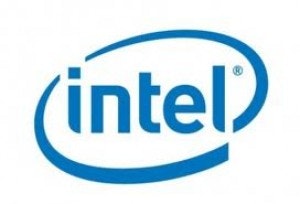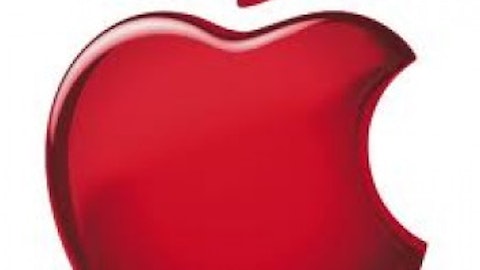In 2006 Intel Corporation (NASDAQ:INTC) pushed International Business Machines Corp. (NYSE:IBM)’s PowerPC processor architecture into obscurity when Apple Inc. (NASDAQ:AAPL) switched its Macs over to Intel processors. In its quest to conquer mobile computing, can Intel overwhelm the ARM Holdings plc (ADR) (NASDAQ:ARMH) architecture in the same way?
Reversal of fortune
The market’s current valuation of Intel Corporation (NASDAQ:INTC) (P/E of 10.18, courtesy Motley Fool) suggests that many have written off Intel’s efforts to get into mobile computing. After all, since the iPad’s introduction in April 2010, no competitive tablet with an Intel processor had even existed through the end of last year. And Intel’s efforts to get into mobile phones fell very flat with its mobile phone platform only making limited appearances overseas but not in the US.

The stage seems to be set for Intel Corporation (NASDAQ:INTC) to recapture its role as the purveyor of commodity processors for personal computing, but in the mobile arena. Indeed, in a previous article, Why Microsoft Needs Intel’s Haswell CPU, I proclaimed this future and urged Microsoft Corporation (NASDAQ:MSFT) to embrace it. It is, I believe, the only future that Microsoft has. But is it inevitable that the rest of the mobile device makers will follow suit? Is the future of mobile devices the same rather bland present of commodity Intel PCs?
History repeats?
In trying to arrive at some answer to this question, I was struck by the similarities as well as differences with Intel’s battle with PowerPC.
Similarities:
Both ARM (which stood originally for Advanced RISC Machine) and PowerPC implemented RISC (Reduced Instruction Set Computing) processor architectures that were supposed to provide higher performance in a simpler, lower-cost implementation. Although it was argued that RISC had inherent advantages compared to Intel’s x86 processors, Intel Corporation (NASDAQ:INTC) was able to mitigate or eliminate those advantages through heavy investment in design and fabrication improvements.
Apple was the principal user of PowerPC processors, and was part of the PowerPC alliance along with IBM and Motorola. Today, Apple is one of the most important users of ARM architecture devices, and at one time held a stake in ARM Holdings (NASDAQ:ARMH). Microsoft, as before, is closely associated with Intel processors, despite its Windows on ARM initiatives.
Differences:
Unlike the PowerPC, ARM Holdings plc (ADR) (NASDAQ:ARMH) architecture processors have a much larger customer base. In addition to Apple, there is the whole of the Google Inc (NASDAQ:GOOG) Android ecosystem, especially Samsung, with an interest in defending ARM against Intel. PowerPCs were the upstart challenger to Intel, but now the tables are turned and it’s Intel challenging the incumbent ARM hardware ecosystem.
Perhaps the most important difference is that in mobile computing, RISC processors may have found their perfect niche. Intel could easily overpower PowerPC in desktops, where power consumption wasn’t a consideration. Intel Corporation (NASDAQ:INTC) has and will continue to find it difficult to achieve the low power performance of ARM processors that consumers have come to expect in their mobile devices. However, I wouldn’t discount Intel’s resourcefulness in this regard.
Conflicting paradigms
Intel Corporation (NASDAQ:INTC)’s impending assault on the mobile device market involves another deeper conflict of technological trends. As processor manufacturers have been able to squeeze ever more transistors onto their chips, more and more functionality has been moved onto them. This has resulted in two divergent mobile device manufacturing paradigms.
The first more traditional approach has been to create commodity type mobile SOCs that offer almost every conceivable interface and processing option that can be squeezed onto the chip in order to appeal to as large a customer base as possible. Companies such as Freescale and Texas Instruments Incorporated (NASDAQ:TXN) took this approach.
However, many device makers such as Apple and Samsung took the opportunity to design their own custom SOCs with just the functionality and interfaces they wanted for their devices.
This design process amounted to shifting the systems integration role of the device makers onto the silicon itself. Apple embraced this paradigm with its custom A4 SOC in the first iPad, which was dismissed at the time by tech pundits such as Jon Stokes as merely catering to the penchant for “boutique processors” of Steve Jobs. However, the paradigm has worked rather well for Apple and other device makers such as Samsung, which not only designs its own SOCs but manufactures them as well.
When Texas Instruments withdrew from the commodity ARM processor market, citing lack of demand partly due to the customization trend, I observed in a blog post that the commodity processor manufacturer may be an anachronism, at least where mobile devices are concerned. In the ARM world, it is ARM Holdings plc (ADR) (NASDAQ:ARMH)’s IP that has become the commodity.
The enemy of my enemy…
Which paradigm will win in the end? In the end, I believe Intel Corporation (NASDAQ:INTC) will be forced to embrace the custom SOC paradigm, collaborating with Microsoft in customized Windows 8 mobile devices. Intel and Microsoft will realign with one another, once Microsoft gives up on its Windows on ARM initiatives, as I’ve long advocated and predicted.
With Windows 8/Intel Corporation (NASDAQ:INTC) devices, Wintel can grow a viable mobile ecosystem to rival iOS and Android. Will it overwhelm its ARM Holdings plc (ADR) (NASDAQ:ARMH)-based rivals? That remains to be seen, but I doubt it. I expect the ARM-based ecosystems of iOS and Android to be able to hold their own as they become unlikely allies in the battle with Wintel. I expect Android’s growth to be somewhat curtailed however, as many prospective and current Android users, who are also Windows users, are enticed to mobile Wintel devices.
I expect the main near-term impact to be to scare ARM investors and force a correction in ARM Holdings plc (ADR) (NASDAQ:ARMH)’s sky high valuation, currently at a P/E ratio of 283.5 (courtesy Motley Fool). This valuation was predicated on an expansion of the ARM franchise due to the success of Windows/ARM devices, as I pointed out in “Does ARM Still have Momentum?” As competitive Wintel mobile devices make inroads and Microsoft retreats from ARM, ARM investors will be forced to realize that ARM’s future growth will come mainly from the existing ARM ecosystems, in line with ARM Holdings plc (ADR) (NASDAQ:ARMH)’s historical growth rate of roughly 30% per year in ARM device shipments and revenue through Q4 2012. This would put ARM’s stock price at about $25/share.
The article Can Intel Do to ARM What it Did to PowerPC? originally appeared on Fool.com and is written by Mark Hibben.
Copyright © 1995 – 2013 The Motley Fool, LLC. All rights reserved. The Motley Fool has a disclosure policy.





